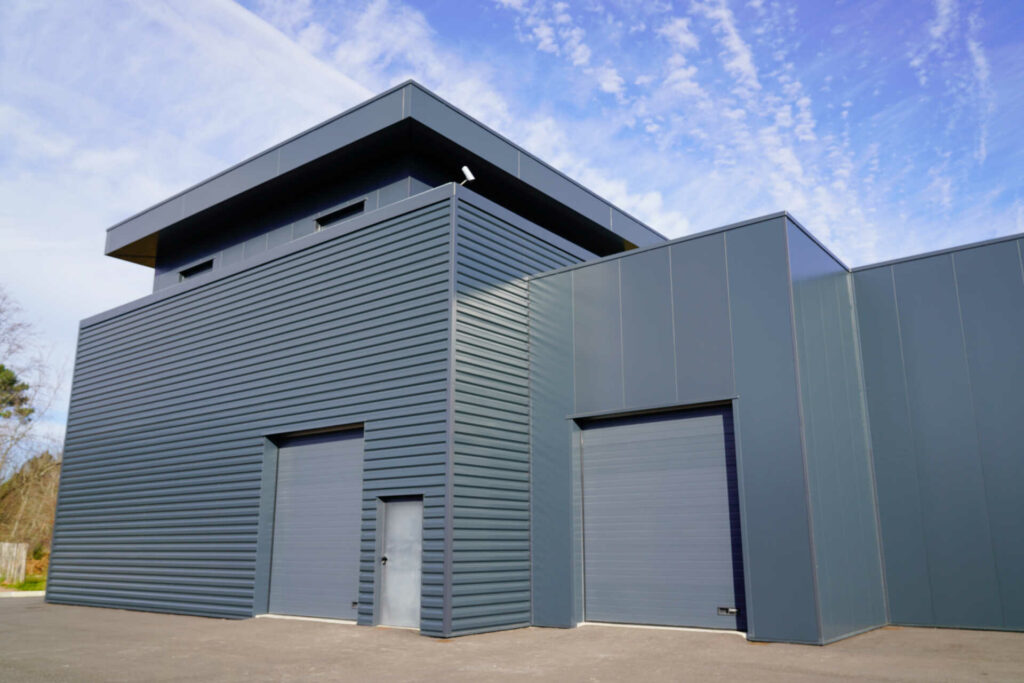
Contents
When aiming to create budget-friendly custom metal structures, considering the initial design layout can greatly impact your overall costs. Imagine being able to optimize your space while keeping expenses in check. This important step lays the foundation for a successful and cost-effective project. By carefully evaluating your needs and priorities, you can create a streamlined and efficient design process that maximizes savings without compromising quality or functionality.
Key Takeaways
- Prioritize material efficiency like galvanized steel for cost-effective strength.
- Opt for energy-efficient features such as insulation and LED lighting.
- Utilize cost-saving techniques like prefabrication and value engineering.
- Focus on durability factors and preventive maintenance for longevity.
- Customize metal structures economically by simplifying designs and finishes.
Initial Budget Assessment
The initial budget assessment is essential for determining project feasibility when designing budget-friendly custom metal structures. Conducting an initial cost analysis allows you to understand the financial scope of the project and make informed decisions regarding budget allocation. This step ensures that your custom metal structure can be built within your set financial parameters.
To begin the initial cost analysis, outline all the elements that will contribute to the overall cost of the project. This includes materials, labor, equipment, permits, and any additional services required to construct the custom metal structure. By breaking down the costs into these categories, you can create a detailed budget allocation plan that will guide you throughout the project.
Once you have determined the initial cost analysis and budget allocation, it’s essential to continually monitor and adjust your budget as needed. Unexpected expenses can arise during the construction process, so having a contingency fund set aside is advisable. By regularly reviewing your budget and making necessary adjustments, you can make sure that your custom metal structure project stays on track financially.
Efficient Design Planning
Effectively planning the design of your custom metal structure requires meticulous attention to detail and strategic decision-making to optimize functionality and cost-effectiveness. To ensure a cost-effective design and efficient space optimization, consider the following key points:
Functional Layout Design: Start by outlining the primary functions and flow of the structure. Design the layout to maximize space utility and minimize wasted areas.
Material Efficiency: Choose materials that strike a balance between durability and cost. Opt for high-quality materials that are cost-effective in the long run.
Optimized Structural Components: Focus on designing efficient structural components that fulfill multiple functions to reduce material usage and costs.
Energy-Efficient Design: Incorporate energy-efficient features into the structure’s design to reduce long-term operational costs and contribute to sustainability.
Flexibility for Future Expansion: Plan the design with future growth in mind. Incorporate flexibility to allow for easy expansion or modifications without requiring a complete redesign.
Material Selection Tips
To enhance the cost-effectiveness and functionality of your custom metal structure, strategic material selection is crucial. When contemplating material options, prioritize material efficiency to ensure the best performance at the lowest cost. Opt for cost-effective options such as galvanized steel, which offers excellent durability and corrosion resistance, making it ideal for outdoor structures. Additionally, aluminum is a lightweight and affordable choice that’s easy to work with, reducing labor costs during construction.
Another material to contemplate for cost-effective solutions is cold-formed steel, known for its strength and versatility. It’s a popular choice for framing, roofing, and cladding due to its durability and ease of installation, making it a budget-friendly option for custom metal structures. Furthermore, recycled steel isn’t only environmentally friendly but also cost-effective, as it provides a sustainable alternative to traditional steel materials without compromising quality or durability.
When selecting materials, always prioritize quality and durability to ensure the longevity of your custom metal structure. By choosing materials that offer both material efficiency and cost-effective options, you can create a sturdy and long-lasting structure without exceeding your budget constraints.
Energy-Efficient Features
When designing budget-friendly custom metal structures, consider incorporating energy-efficient features like insulation, solar panel integration, and LED lighting options.
These elements can help reduce energy consumption, lower utility costs, and minimize environmental impact.
Insulation for Efficiency
Insulating custom metal structures efficiently maximizes energy savings and maintains ideal indoor temperatures. When considering insulation choices, keep in mind the balance between upfront costs and long-term energy savings.
Here are some tips for ensuring efficiency and cost-effectiveness:
- Choose insulation materials with high R-values to reduce heat transfer.
- Seal all gaps and joints to prevent air leakage, enhancing the insulation’s effectiveness.
- Consider reflective insulation to deflect heat away from the structure.
- Utilize spray foam insulation for hard-to-reach areas and maximum coverage.
- Opt for insulated metal panels for a combination of structural support and thermal efficiency.
Efficient insulation not only reduces energy consumption but also creates a comfortable and sustainable environment within your custom metal structure.
Solar Panel Integration
Efficiently integrating solar panels into custom metal structures enhances energy efficiency and sustainability, contributing to long-term cost savings and environmental benefits.
When considering solar panel integration, it’s important to focus on the installation process and panel efficiency. The installation process should be seamless, ensuring that the panels are securely attached to the metal structure to maximize energy production.
Additionally, selecting high-efficiency panels will optimize energy output, making the most of the available space.
Apart from the immediate benefits of reduced electricity bills, integrating solar panels also has a positive environmental impact by reducing carbon emissions. Moreover, government incentives such as tax credits and rebates can offset the initial investment costs, making solar panel integration a financially viable and environmentally conscious choice.
LED Lighting Options
To enhance energy efficiency and reduce operational costs, explore the energy-efficient features of LED lighting options for custom metal structures. Consider the following when selecting LED lighting options:
Smart Lighting: Implement smart lighting systems that adjust based on occupancy and natural light levels.
Energy Saving Fixtures: Choose LED fixtures specifically designed for energy savings to minimize electricity usage.
Long Lifespan: Opt for LED lights known for their extended lifespan, reducing replacement and maintenance costs.
Low Heat Emission: Select LEDs that emit minimal heat to improve the overall thermal efficiency of the structure.
Customizable Options: Utilize LED lighting solutions that offer customizable settings to meet specific lighting needs efficiently.
Cost-Saving Construction Techniques
Implementing strategic material selection can greatly reduce costs without compromising structural integrity in custom metal structure construction. By utilizing cost-effective finishes, construction methods, sustainable design, and eco-friendly materials, you can achieve significant savings while still achieving a high-quality end result.
To help you visualize the cost-saving techniques available, below is a table showcasing some effective strategies:
| Cost-Saving Construction Techniques | Description |
|---|---|
| Prefabrication | Off-site construction of components |
| Value Engineering | Maximizing functionality at lower costs |
| Recycled Materials | Incorporating eco-friendly resources |
| Simplified Design | Streamlining for efficiency |
Prefabrication involves constructing parts off-site, reducing labor costs and construction time. Value engineering focuses on optimizing functionality to lower expenses without compromising quality. Using recycled materials not only benefits the environment but can also be cost-effective. Simplifying the design can lead to reduced material usage and faster construction processes.
Maintenance and Longevity Considerations
When designing custom metal structures with budget constraints in mind, it’s essential to take into account the durability factors that can impact the longevity of your project.
Implementing preventive maintenance strategies early on can greatly extend the lifespan of your metal structures and reduce long-term maintenance costs.
Understanding the factors that contribute to the longevity of metal structures will help you make informed decisions that balance cost-effectiveness with durability.
Durability Factors to Consider
Take into account key durability factors such as maintenance requirements and expected longevity when designing custom metal structures to ensure peak performance and cost-effectiveness over time.
When considering durability, focus on:
Corrosion Resistance: Choose materials with high corrosion resistance to prolong the lifespan of your metal structure.
Structural Strength: Opt for designs that enhance structural strength to safeguard the stability and safety of the structure.
Surface Coatings: Apply protective coatings to prevent corrosion and extend the life of the metal structure.
Regular Inspections: Schedule routine inspections to identify any signs of wear or damage early on.
Proper Cleaning: Maintain cleanliness to prevent dirt and debris buildup, which can contribute to corrosion and deterioration.
Preventive Maintenance Strategies
To ensure the continued performance and longevity of your custom metal structure, establishing effective preventive maintenance strategies is essential. Regular inspections play a vital role in identifying potential issues before they escalate, allowing for timely repairs to be carried out.
By implementing a structured inspection schedule, you can proactively monitor the condition of the structure, ensuring that any signs of wear, corrosion, or damage are promptly addressed. Conducting thorough inspections at regular intervals enables you to catch problems early, preventing them from developing into more extensive issues that could compromise the integrity of the metal structure.
Longevity of Metal Structures
Setting up a thorough maintenance plan is crucial for ensuring the longevity of metal structures, incorporating key considerations for peak performance and durability. When thinking about the long-term maintenance and structural integrity of your metal structure, consider the following:
- Regular inspections to detect any signs of corrosion or damage early on.
- Implementing a schedule for cleaning to prevent the buildup of debris or contaminants.
- Applying protective coatings or paints to shield the metal from environmental factors.
- Addressing any repairs promptly to prevent small issues from escalating.
- Monitoring the structural load capacity to make sure it isn’t exceeded, maintaining the safety and integrity of the metal structure.
Customization Without Overspending
Efficiently customizing your metal structures without exceeding your budget requires strategic planning and careful consideration of cost-effective design choices. When aiming for cost-effective customization, opt for pre-engineered metal structures, as they offer budget-friendly options without compromising quality. These structures are designed off-site and then assembled on your property, reducing construction time and labor costs.
Consider the layout and design of your structure. Simple designs with standard dimensions are more affordable than complex, custom designs that require additional materials and labor. Additionally, choosing standard colors and finishes can help you save on customization costs.
Another way to customize without overspending is by selecting the right materials. Opt for durable, low-maintenance materials that are cost-effective without sacrificing quality. Conduct research on different material options and their long-term costs to make an informed decision.
Moreover, working closely with your metal structure provider can help you find cost-effective solutions that meet your customization needs. They can offer valuable insights and recommend budget-friendly alternatives without compromising the structural integrity of your project.
Final Thoughts
When designing budget-friendly custom metal structures, remember that every dollar counts. You can maximize functionality by incorporating energy-efficient features and utilizing cost-saving construction techniques while staying within budget constraints.
Prioritize smart design choices for a durable, sustainable, cost-effective custom metal structure.
Recent Posts
Explore Benefits of Residential Metal Structures
It’s funny how you might stumble upon the idea of residential metal structures just when
5 Best Durable Metal Garages for Longevity
Imagine your garage as the backbone of your property, supporting everything from tools to vehicles,
3 Tips for Durable Metal Garages
Is it true that the longevity of your metal garages hinges on just a few




